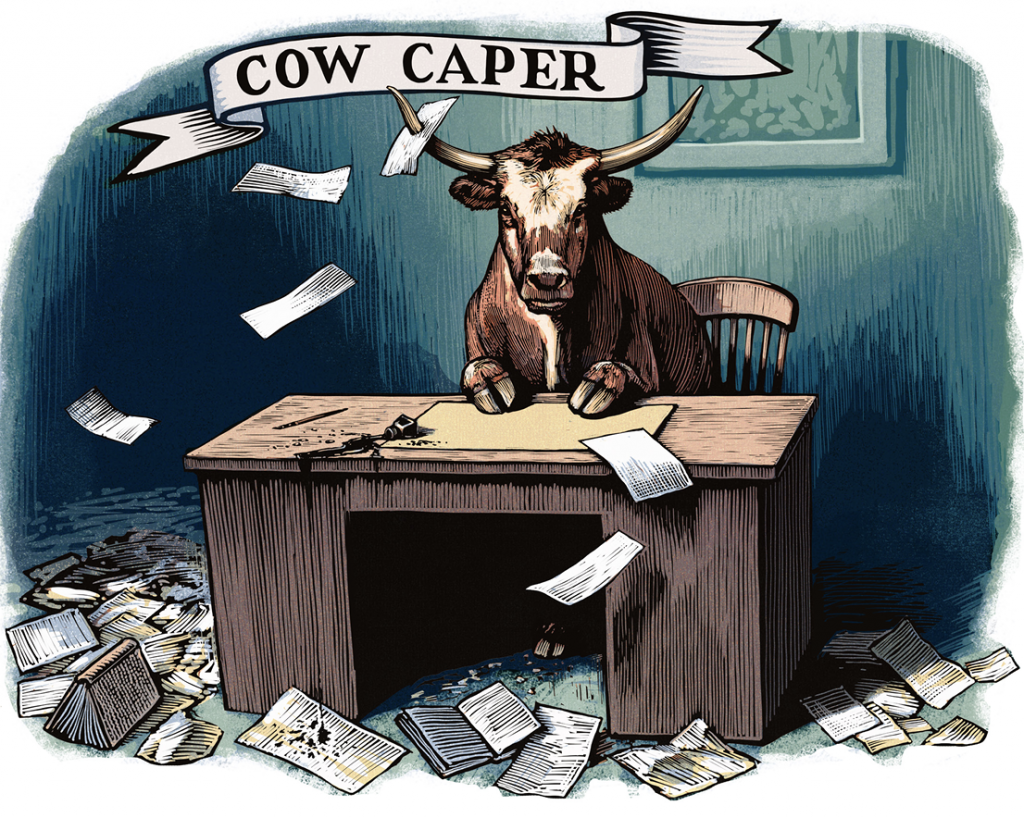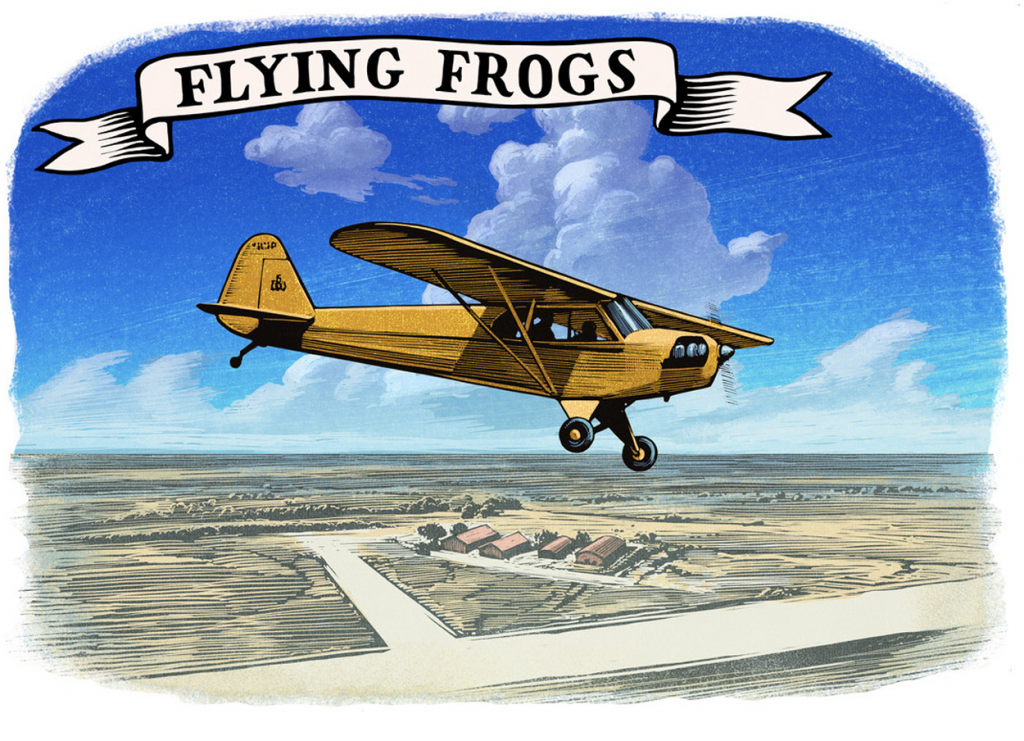Short stories, lots of fun
Throughout its 150 years, TCU has seen its students joke, fly and love.


Music education majors Aidan Kane and Molly Leonard model band uniforms from the 1950s that belonged to Jack King and Becky Baxter King. Photo by Joyce Marshall.
Short stories, lots of fun
Throughout its 150 years, TCU has seen its students joke, fly and love.
The first prankster at TCU may very well have been one of its founding fathers. Addison Clark liked to one-up students at the AddRan Male and Female College, which would become TCU in 1902.
In one instance, he surprised a group of students that had slipped away from campus for a chicken roast in nearby woods. One student climbed a tree where chickens were roosting and asked others there if a certain chicken was meaty enough to eat. Clark, hiding just out of sight, answered yes.
The student in the tree was so shocked that he fell and needed several days to recover.
TCU has never been like Faber College from the movie Animal House, but students have always found a way to have some fun.
Beat of Love
The vintage purple coveralls now on display in the TCU Music Center were a gift from Trustee Jeff King ’81; they belonged to his parents, Jack King ’58 and Becky Baxter King.
The elder Kings said that the marching band wore the outfits (modeled here by music education majors Aidan Kane and Molly Leonard) as travel uniforms and in parades when the weather was hot.
“The band under Professor Jim Jacobsen was very active and considered to be very innovative with their military-type precision shows, including the moving-diamond formation,” said Becky King.
The couple met on the first day of band training. Jack King, a senior, and Becky Baxter, a first-year, fell in love and married in Robert Carr Chapel on the last day of school that year.
Becky King later went to law school and became a district attorney in Potter County, Texas.
“My dad got his degree in music education,” Jeff King said, “and — following in Professor Jacobsen’s footsteps — was a high school band director for many years, known especially for his marching bands.”
— Laura Samuel Meyn

Mess with the Bull
In his 1916 inauguration speech, TCU President Edward McShane Waits told students to cooperate, dream big and work hard — and five students did just that when they sneaked a cow into Waits’ office.
Waits missed the prank while out of town, but his office had to be cleaned and repainted.
The pranksters’ identities remained secret until 1958, when ringleader James Shirley Sweeney, a 1917 graduate, confessed. Sweeney never named his co-conspirators but said one became a senator and another a district judge.
An English major, Sweeney was vice president of the senior class, an accomplished vocalist and executive editor of the Horned Frog yearbook. With his fellow seniors, he also liked to poke fun, including in a show featuring impersonations of Waits and TCU professors, which the TCU Daily Skiff called “the greatest comedy ever presented to TCU students.”
Sweeney became a prominent endocrinologist, cofounding the Texas Diabetes Association, establishing the Dallas chapter of the American Diabetes Association and founding Camp Sweeney, the Gainesville, Texas, camp for diabetic children. In 1972, Sweeney was honored with TCU’s Distinguished Alumni Award.
The 1917 seniors may have joked around, but “we love every inch of ground and every brick which is a part of the university,” they wrote in an early 1917 edition of the Skiff. “[We hope to] give of our time and talent and material resources in making TCU a bigger and greater and grander university.”
— Camilla Price

Catching Some Air
In the mid-1940s, following World War II, Horned Frogs were swept up in the flying fever that captivated the nation. For roughly a decade, the small TCU Airport operated near present-day Interstate 20 and Granbury Road.
“It was established sometime between 1944 and 1947,” said Gene Allen Smith, professor of history and director of the Center for Texas Studies at TCU, who discovered the airport’s existence in a 1947 Dallas-Fort Worth Sectional Aeronautical Chart. “At that time, it had two perpendicular grass runways, and there were a few small buildings.”
Smith and Jackson Pearson’s new TCU Press tome, Images and Stories of TCU’s First 100 Years, includes a section on the airport with an undated advertisement touting the airfield as a government-approved GI flight training school with private and commercial flight instruction.
“We don’t know that much about the facility because it wasn’t in existence that long. … I very honestly think it was a private venture that the university just attached its name to,” Smith said.
The airport was likely used for flight training by TCU’s Air Force ROTC unit, established on campus in 1951, and probably the Flying Frogs, a TCU student club that took to the skies in 1947.
Competing against other collegiate aviation programs, the Flying Frogs earned trophies in spot landing, speed dash, treasure hunt and bomb dropping — using sacks of flour. During the 1948 National Intercollegiate Air Meet in Ann Arbor, Michigan, the Flying Frogs placed second, and Mary Helen Rattikin Bodine ’49 was named the nation’s top female pilot.
By the mid-1950s, the TCU Airport had grown to three runways, multiple taxiways and added a ramp.
But in 1957, the airfield no longer showed up on the Dallas-Fort Worth Sectional Aeronautical Chart, Smith said. “By 1959, a housing development started to cover much of the site.”
— Rachel Stowe Master

Your comments are welcome
Comments
Related Reading:
Features
A Prescription for Success
TCU’s health policy program from the Neeley School of Business trains medical industry professionals in the business of health care.
Features
Campus of the Future
TCU’s Campus Master Plan builds on the university’s vision and values.